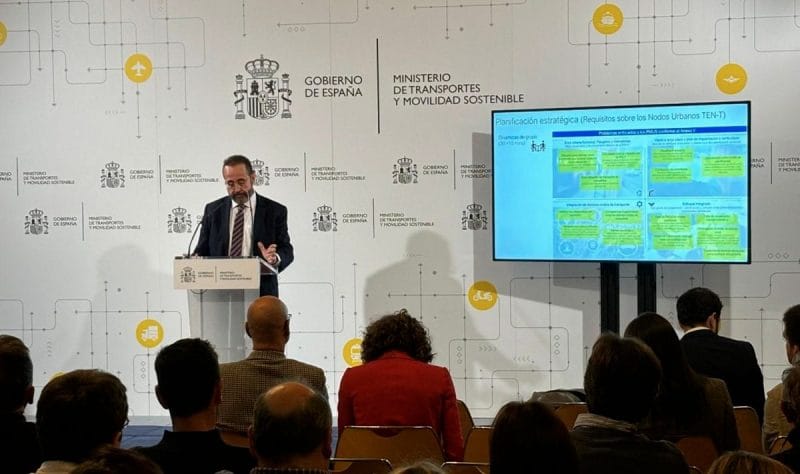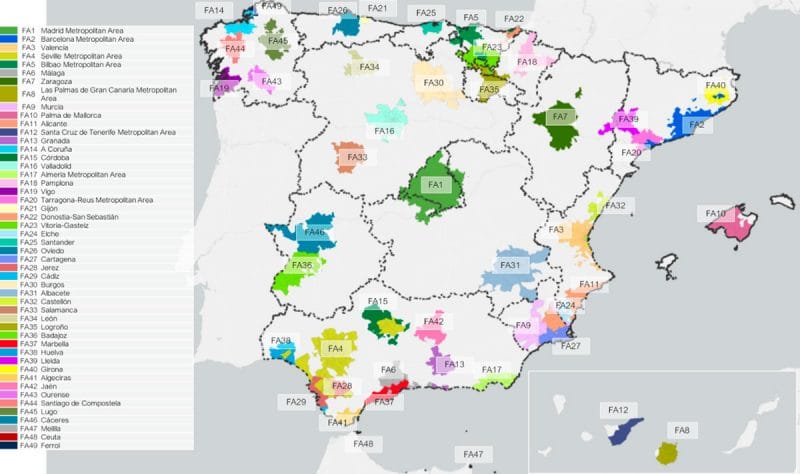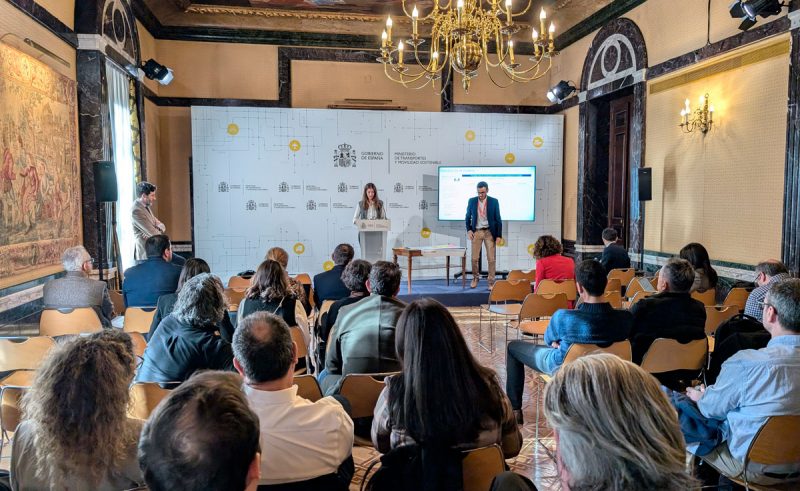The Trans-European Transport Network (TEN-T) is the backbone of mobility in the European Union. The 2024 revised regulation (EU 2024/1679) updates the guidelines for core network completion by 2030 and comprehensive network completion by 2050, aligning investments and operations with sustainability, climate resilience, digitalisation and accessibility objectives. The review introduces a clear emphasis on multi-level governance, planning at the functional area scale and monitoring using comparable indicators. This requires stable cooperation mechanisms and solid methodologies to prioritise actions and measure results transparently.
Within this framework, a shift in approach gains special relevance: the centrality of urban nodes. The TEN-T network defines them as points where passenger and freight trips originate, terminate or are transferred. Spain has 49 urban nodes which, due to their demographic and functional importance, play a key role in intermodality, integration of transport modes, and organisation of metropolitan mobility. European regulation emphasises that flows to, from and through these nodes must be seamless, requiring authorities to act on local and metropolitan connectivity with specific plans and tailored management measures.
Among the most relevant commitments is the requirement for each urban node to have a Sustainable Urban Mobility Plan (SUMP), conceived as a comprehensive and strategic tool that covers the urban centre and its Functional Area. These plans must set objectives, targets and indicators and consider the interaction with medium and long-distance flows. To ensure comparability and transparency, Member States are required to collect and submit node mobility data to the European Commission through a harmonised reporting system.
 Participatory workshop organised by TYPSA/BEI/MITMS with the three pilot functional areas
Participatory workshop organised by TYPSA/BEI/MITMS with the three pilot functional areas
In this European context, and on behalf of JASPERS (Joint Assistance to Support Projects in European Regions) and the European Investment Bank (EIB), with the Spanish Ministry of Transport and Sustainable Mobility (MITMS) as beneficiary, TYPSA has led a landmark study that provides Spain with a clear guideline for planning, coordinating and evaluating mobility around the urban nodes of the TEN-T network. The aim has been to convert the European standard into a practical working architecture, adapted to the Spanish institutional framework, capable of channelling strategic decisions and guiding investment toward the highest impact projects.
The starting point has been an innovative methodology for defining functional areas around the urban nodes of the TEN-T network. TYPSA´s team integrated massive and anonymous sources of mobility data (mobile-phone origin-destination matrices) with statistical and socio-economic analyses in a GIS environment, in order to build a functional mobility map that precisely describes where daily trips are concentrated and what interdependencies exist between urban nodes and their surroundings. As a result, 61 functional areas associated with the 49 urban nodes of the TEN-T network in Spain have been defined and classified.
 Set of functional areas defined within the study
Set of functional areas defined within the study
The study combines technical rigor and institutional coordination. Building on this functional area model, diagnostics were developed in three pilot functional areas representing scale and complexity —Madrid—Valladolid, Bilbao—Vitoria—Donostia/San Sebastián and Castellón—Valencia—Alicante—Elche—Murcia—Cartagena—, validated through numerous technical workshops with the competent authorities.
This process has made it possible to validate the approach, identify common challenges and, above all, establish an operational consensus on priorities, an essential condition for moving from analysis to execution within the timelines of the European regulation.
The proposal places governance at the heart of the solution. TYPSA has proposed the creation of Functional Area Forums as stable cooperation spaces between the ministry, the regional governments (Autonomous Communities), provincial councils and municipalities. These forums are structured around a work programme which organises the decision-making cycle: shared diagnosis, investment plan, prioritisation and scheduling of strategic actions and initiatives, with defined roles for institutional coordination and technical support, together with a monitoring cadence that ensures continuity beyond political terms of office.
 Workshop with the pilot functional area of the Basque Country
Workshop with the pilot functional area of the Basque Country
Around this inter-institutional cooperation mechanism, TYPSA has proposed a gradual roll-out, based on the creation of a Technical Coordination Office in the Ministry of Transport and Sustainable Mobility (MITMS) for the phased activation of forums in the different functional areas. The deployment is designed to integrate with national and European funding mechanisms, linking planning, governance and resources along the same pathway.
This architecture is underpinned by a homogeneous system of mobility indicators, aligned with the revised Regulation and with the work of the Expert Group on Urban Mobility (EGUM). The dashboard enables the measurement and comparison of progress in sustainability, accessibility and safety, with time-series traceability and coherent reporting to EU bodies. The added value is operational: it reduces programmatic uncertainty, speeds up the maturation of project pipelines, and improves eligibility for European funding instruments.
The expected impact is clear. Institutionally, the methodology organises multilevel cooperation, reduces gaps in governance and provides stability to strategic decisions. Technically, the quality of investment programming is raised, with objective criteria for prioritisation, effectively integrating the first and last mile with the TEN-T network, and improves interoperability between transport modes. Socioeconomically, it promotes more accessible, safe and sustainable mobility, and contributes to regional cohesion and the competitiveness of urban and metropolitan areas.
 The Mediterranean and Atlantic corridors, key axes of the Trans-European Transport Network in Spain
The Mediterranean and Atlantic corridors, key axes of the Trans-European Transport Network in Spain
For TYPSA, this project reaffirms the company’s position as a strategic partner to public administrations in modernising the transport system. Our contribution combines European and national vision, robust data-driven methodologies and the capacity to build large-scale, executable solutions. TYPSA provides the method, solvency and execution capacity to take the EU’s ambition from paper to the field: better-grounded decisions, more effective investments, and verifiable results.
Spain now has a consistent roadmap for its urban nodes in the TEN-T network: a common technical basis to read real-world mobility, a stable cooperation mechanism to agree on priorities and a comparable system of indicators to evaluate progress with rigour and transparency. That is the essential value of the work led by TYPSA: transforming the European standard into effective public management, with a direct impact on the accessibility, intermodality and safety of urban and metropolitan mobility, with a trajectory aligned with the 2030 and 2050 milestones.





 W
W The Mediterranean and Atlantic corridors, key axes of the Trans-European Transport Network in Spain
The Mediterranean and Atlantic corridors, key axes of the Trans-European Transport Network in Spain

